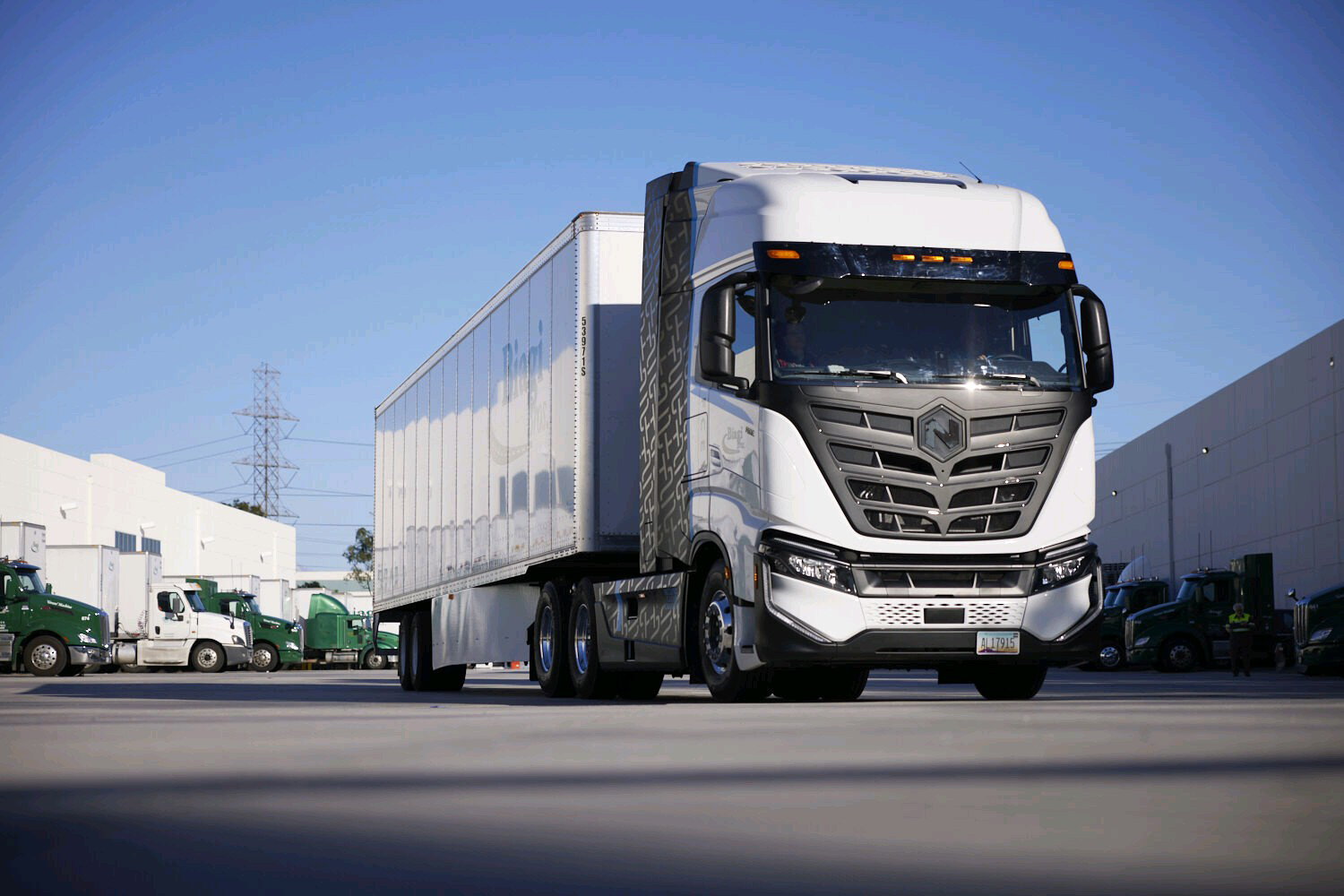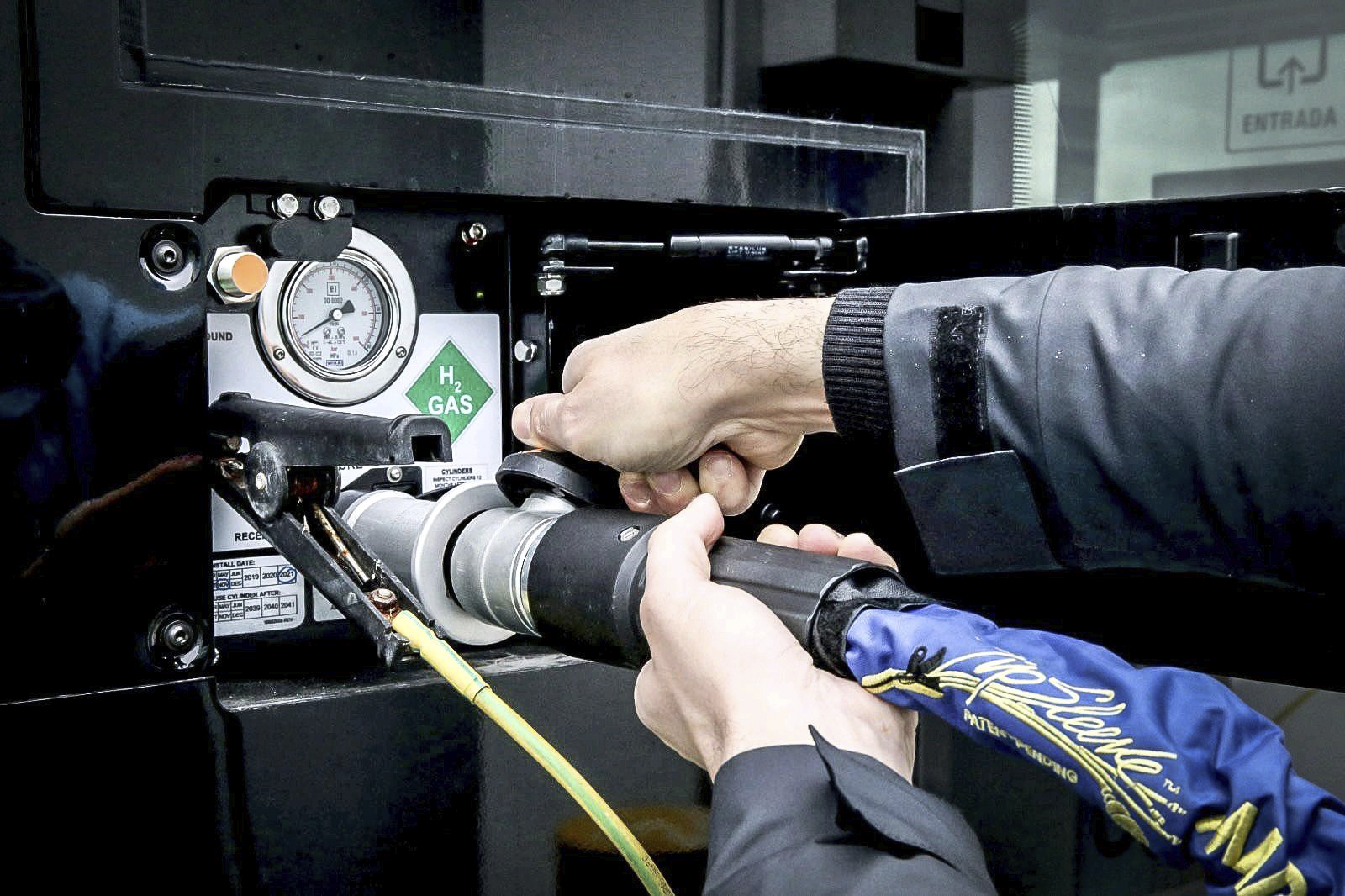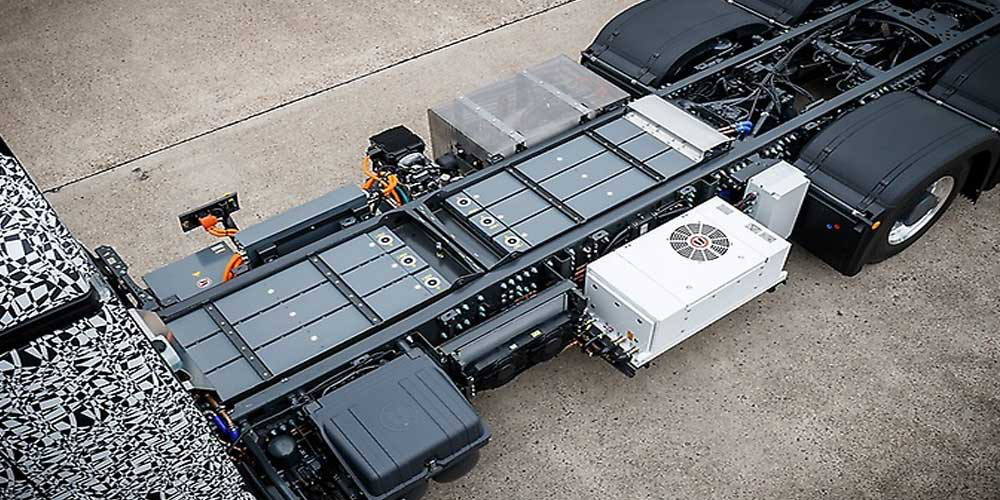Fuel cells vs. batteries – How will truck fleets decarbonise?
Road haulage is responsible for approximately 6.5% of global CO2 emissions. Trucks, which are increasingly used to transport all types of cargo, are as necessary for our daily lives as they are harmful to the environment. Therefore, bearing in mind that this sector tends to increase rather than reduce its consumption, it is important to find a way to ensure that their energy consumption does not result in carbon dioxide emissions.

Figure 1 – Truck emissions today & by 2030. Source Transport&Environment
Two alternatives rise above the others, battery electric vehicles (BEVs) and fuel cell vehicles (FCEVs). Although both technologies are still at an early stage, BEV technology has been greatly benefited by the development and deployment already done to supply the utilitarian market. Furthermore, there are far more BEV trucks deployed worldwide than FCEVs now, so BEV technology is one or two years ahead of hydrogen technology. On this post, we will compare the two technologies, keeping one thing clear right from the start; BEVs and FCEVs are not rival technologies, as some OEMs would have us believe. BEV and FCEV are COMPLEMENTARY and both will help to decarbonise road transport by delivering the best of each technology according to the different needs.

Figure 2 – Nikola Tre 2 FCEV
In order to understand where each technology can contribute, the comparison will be made on the following variables:
Efficiency
As shown in the image below, there can be no comparison between battery and fuel cell vehicles regarding this variable. Without any doubt, a battery is much more efficient than the hydrogen alternative. The reason is that with BEVs, the processes which take place to power the vehicle straight from electricity generation are purely transport and storage of electrons, which is simple and efficient. On the other hand, to power a hydrogen vehicle, hydrogen must be generated, a process which already involves a large loss of efficiency, transported and stored, which also takes large amounts of energy, plus it must then be converted to electricity in the fuel cell within the vehicle – again resulting in losses of about half the energy. All these conversion processes cause the famous well-to-wheel efficiency to be as low as 30 %, whereas in BEVs it could be as high as 75 %. There is no doubt that improvements in these efficiencies are possible, even up to 50% in the case of hydrogen, but there will always be a big gap between BEV and FCEV.
Why is efficiency so important?
When discussing about which fuel should be used to reduce emissions, we often ignore one fact: the best alternative is to use NO energy. Therefore, efficiency is the best fuel. Moreover, as will be shown later, fuel expenses nowadays represent between 30% and 40% of the total costs of a commercial vehicle such as a truck over its lifetime. Hence, reducing this consumption will bring great economic benefits for the company.

Figure 3 – Efficiency comparison of both technologies
Payload
One of the key features that perfectly defines why each fleet and each operation must be evaluated to recommend the best technology to decarbonise. The payload is the useful load capacity, meaning how much load a truck can handle until its maximum permissible weight is achieved. For comparison purposes, a truck with a Maximum Authorised Mass (MAM) of 40 t (payload approx. 30 t) and a range of 800 km will be the reference. This range is important as the weight of the vehicle will increase proportionally to the need of storing more energy (more battery installed).
For such range, and with a consumption of 1.44 kWh/km for an electric truck, the weight of a battery with a 200 Wh/kg energy density would rise to 5,760 kg. This weight rises to 7,200 kg, considering a 20% oversizing to protect the life of the battery (not performing complete charge/discharge cycles).
A hydrogen truck with a fuel consumption of 9 kg/100 km should store approximately 72 kg of hydrogen, which implies a tank weight of 1,100 kgH2. If the weight of a fuel cell with a power density of 2 kW/kg is combined here, a truck with a power requirement of 150 kW fuel cell output could have a system of 75 kg in weight. Adding a battery of approx. 50 kWh, the total weight of the system would be 1,425 kg.
The assumption is that both vehicles would be powered by an electric motor with a similar weight.
Therefore, the outcome of this comparison is clear. A battery truck would weigh up to 5,775 kg more than a hydrogen one for a range of 800 kilometres.
However, this weight increase is different when driving around the region, where the required range is 300 km. Here, it would result in a weight of 2,700 kg for the BEV and 910 kg for the FCEV, thereby minimising the effect on the payload.
It is worth pointing out that zero-emission vehicles will be able to haul up to 2 tonnes more weight than those that contaminate. In comparison with diesel trucks, the advantage is that a hydrogen truck barely loses any payload capacity for long distances, whereas an electric vehicle could lose about 20 % of its total capacity.

Figure 4 – FCH JU Heavy-duty trucks
Range
As has already been mentioned, the range of both technologies depends mainly on the use of energy storage systems, either batteries or hydrogen tanks. However, the state of battery technology nowadays excludes the feasibility to reach ranges of over 400 km, which is the upper limit for the vehicles deployed. It is also noteworthy that batteries suffer degradation over time, decreasing their range by 20 %. On the other hand, hydrogen vehicles start with ranges of up to 1,000 km for liquid hydrogen storage, whereas most vehicles – using 700 bar storage – aim for ranges of 800 km.
This is directly related to the next variable to take into account. The question is, how important is range when a tank can be refuelled in a few minutes? Refuelling time of vehicles as well as the ability for non-stop refuelling of both batteries and tanks are especially significant when deciding which sustainable alternative should be used. Whilst a hydrogen vehicle can be fully recharged in 10 minutes, at a rate of about 120 km/minute, the rate of charging for electric vehicles depends on the available power output. The fastest charge could range from 1 MW up to a slower charge of 100 kW power (this is in continuous evolution). A charge close to 1 MW of power could provide the truck with a full charge in 45 minutes, which is the break time every 4.5 hours for a truck driver. However, these rates are not practical since the charging speed would be gradually decreasing to protect the integrity of the battery.
Meanwhile, lets imagine an area with 10 trucks charging at the same time, each one consuming 1 MW of power. Overall demand of 10 MW is a very difficult load to withstand for the power grid, which would face the creation of lots of energy consumption sites spread all over the country. As an example, there are around 12,000 petrol stations in Spain, most of which could be converted into high-power electricity loads over the following years.
A further important fact is that companies owning their vehicles should consider whether they have the capability, both in terms of space and availability of the power grid, to charge a significant number of vehicles (albeit at a slow rate of charge).

Figure 5 – Hydrogen fuelling in a Nikola Tre FCEV
Lifetime
This is quite critical, yet uncertain, as there is limited available information about how many cycles can a battery system withstand on a truck, or how many hours will a fuel cell last before its electrical production capacity decreases by 10% of its nominal level. Such parameters are essential, since a battery system, for example, can have an estimated cost of €50,000-100,000 according to the required range (assuming €150/kWh). Therefore, a battery replacement can result in large financial losses if it has not been properly planned for. Nowadays batteries offer a life of about 1,000 cycles, equivalent to about 5 years of truck service life, although they are already claimed to have up to 3,000 cycles within the next few years. On the other hand, fuel cells typically offer a lifetime of 10,000 hours, though manufacturers such as Ballard already offer 30,000, far beyond required.

Figure 6 – Battery layout in a BEV
Upfront investment
While a diesel truck may cost around €80,000-120,000 these days, electric trucks cost three times as much and hydrogen trucks up to five times higher. In a best-case scenario, over the next 10 years, electric or fuel cell trucks will involve upfront investments up to twice as much as a diesel truck costs nowadays. As we have already mentioned, the initial investment may be an obstacle for purchasing these vehicles, but it is far from being the main factor, since there are other costs that arise throughout all the years of a vehicle’s use, such as the above-mentioned fuel or even maintenance costs and tolls. The higher efficiency of both battery and hydrogen alternatives means that (subject to costs) this difference in the upfront investment versus the diesel alternative can be regained. In addition, fewer movable components contribute to lower maintenance costs and the proposed 50-75% reductions in tolls over the next few years will help to move towards parity on the lifetime cost of the asset (TCO) of these alternatives, which is generally estimated in €/km.

Figure 7 – TCO comparison of diesel, battery and fuel cell trucks. Source Powering the future of mobility (Ballard&Delloite)
Therefore, we regret the disappointment of those of you who thought that the answer was going to be black or white. Choosing the best alternative will therefore depend on the needs for the logistics operation, the space available to charge the electric vehicles in the case of choosing the BEV solution, and even the flexibility required by the vehicles being used. The payload is also a key parameter when choosing, as a company that carries clothes, for example, will have no problem at all, but a truck hauling a heavy load will need to maximise its payload capacity.
At SynerHy we have special tools to estimate the TCO of vehicle fleets based on multiple variables such as the ones mentioned above, with which we can estimate the best option available for each situation.
If you are interested, do not hesitate to contact us at info@synerhy.com. We would be pleased to help you.